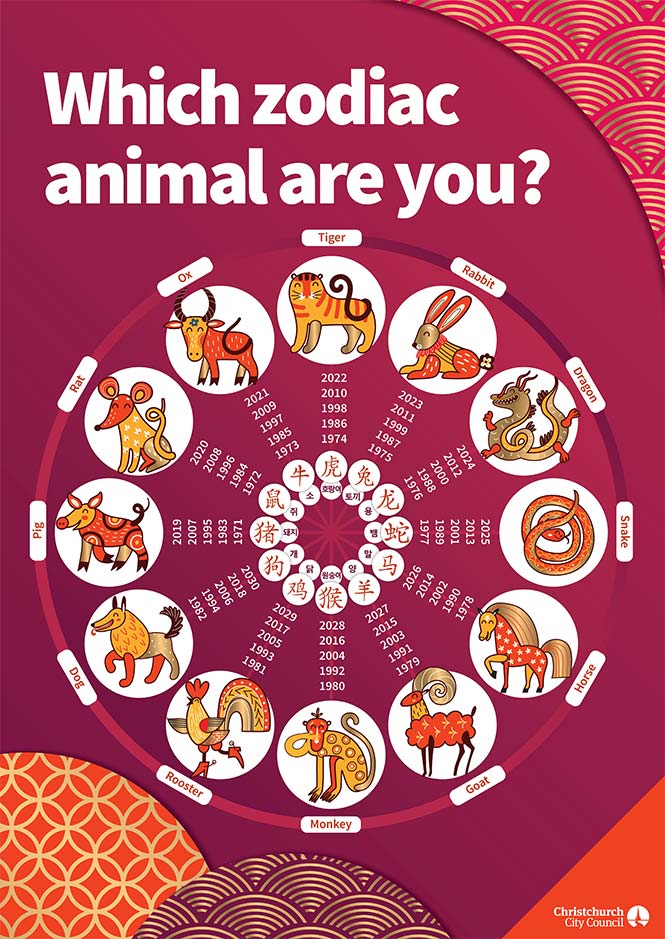Lunar New Year
Join us for fun, festive activities and events. Lunar New Year is one of the world's most celebrated festivals. Celebrate the Year of the Horse in 2026.
Events
-
Lunar New Year Bilingual Wā Kōrero-Storytimes
Feb 19th | 11:00am - 11:30am
Dates
In the lunar calendar each month begins on the darkest day. The New Year falls on the second new moon after the winter equinox in the northern hemisphere. Matariki, the Māori New Year, is held in June, and is a similar new year celebration for the southern hemisphere.
The actual day of the Lunar New Year varies, falling between mid January and mid February.
- Visit Wikipedia for a list future dates
- Read our New Year page for dates of other celebrations around the world.
The Chinese zodiac
The Chinese zodiac links twelve animals to a cycle of twelve years. Many people believe that a person born in a particular animal’s year will have the personality traits of that animal.

Lunar New Year traditions
The festival heralds the arrival of spring and the reunion of the family. Houses are cleaned from top to bottom to remove traces of old misfortune. New outfits are brought and bills paid. The Kitchen God who watches over the household all year makes his report to the Jade Emperor deciding the fate of every family. To gain his favour he is offered the best food and his lips are covered with honey.
People paste new wood-block prints called nianhua and New Year’s couplets called chunlian on their doorways. Nianhua use symbols of fish for abundance, dragons for power, butterflies for longevity, bats for good luck, and seeds or melons for children to convey hopes for the coming year. Chunlian couplets are written on vertical strips of red paper in the best calligraphic style, expressing happy and hopeful thoughts for the coming year.
Red is a dominant colour for new year decorations and fortune telling is a popular event at this time.
Lunar New Year songs
Library staff perform songs that celebrate Lunar New Year.




